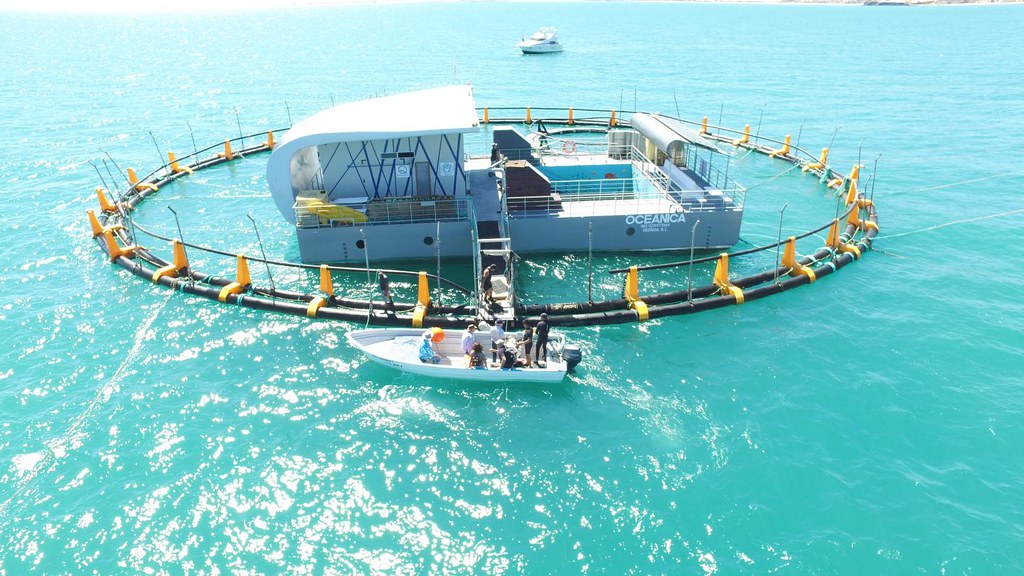受墨西哥環境與自然資源部之託,一國際專家小組在墨西哥聖費利佩集合,開始執行拯救加灣鼠海豚免於滅絕的特殊計畫。
極度瀕危的加灣鼠海豚只在墨西哥加州灣出沒。1958年首次被發現,1997年至2016年間數百隻死於刺網,數量從原先的600隻左右至今減少了90%,只剩下不到30隻。
加州灣行動於10月12日展開,運用受過訓練的美國海軍海豚來定位鼠海豚。這個名為「VaquitaCPR」的救援計畫是國際鼠海豚復育委員會(CIRVA)所建議執行,來自墨西哥、美國、丹麥、荷蘭、加拿大、香港和英國的專家攜手合作,進行定位、搶救行動,接著暫時移至位於聖費利佩海岸的海洋保護區。
「VaquitaCPR」的目標是當生存威脅解除後,讓鼠海豚回到自然棲息地。
生物多樣性中心墨西哥代表奧利維拉(Alex Olivera)說:「我們支持用這最後一搏來拯救瀕危物種,但它不應該被當做開放繼續捕魚的藉口。」
2015年4月,墨西哥總統尼托空前宣布在鼠海豚棲息範圍內執行為期兩年的禁捕令,補償漁民及相關行業的收入損失,並加強了墨西哥海軍領導的執法行動。今年6月,這個禁令轉為永久有效。政府開始用目視監控和聲音定位之先進技術,對鼠海豚族群進行了大規模調查。
到目前為止,墨西哥政府已經承諾投入超過1億美元於保護鼠海豚和支持當地漁業社區。
「VaquitaCPR」的關鍵是尋找剩餘鼠海豚族群的聲學監控系統。鼠海豚數量監測活動自2012年以來持續獲得世界自然基金會(WWF)的支持,並由墨西哥國家生態與氣候變化研究所(National Institute of Ecology and Climate Change)負責執行。
WWF也持續支持收回遺失或被遺棄的「幽靈」魚網,其中許多是非法魚網。這些魚網四處漂流,糾纏和殺死鼠海豚和其他海洋物種。聲學監測和魚網尋回的活動都是依賴當地漁民的經驗和幫助下進行的。
WWF墨西哥分會執行長李卡德(Jorge Rickards)表示:「儘管這個行動有許多的不確定性,WWF認為要保護鼠海豚免於滅絕,還是有必要執行。WWF支持CPR行動,唯一目標就是將健康的鼠海豚放回原棲地,要達到這個目標,我們的重點工作是確保上加州灣成為健康、沒有刺網,野生物和當地社群可以和諧共存的棲地。」
捕獲的鼠海豚將被放置在灣內的箱網中,以保護牠們免於因非法捕魚活動而滅絕。希望在保護之下,鼠海豚能夠再次繁殖、增長,最後回到野外生存。
An international team of experts has gathered in San Felipe at the request of the Mexican Ministry of Environment and Natural Resources, and has begun a unique plan to save from extinction the world’s smallest porpoise, the critically endangered vaquita.
The vaquita is found only in Mexico’s Gulf of California; it was first discovered in 1958. But between 1997 and 2016, hundreds of vaquitas died in gillnets. Their estimated population dropped from about 600 to fewer than 30 animals today.
The operation in the Gulf of California began October 12, using trained U.S. Navy dolphins to locate vaquita, whose numbers have dwindled by 90 percent in the past five years.
The project, which has been recommended by the International Committee for the Recovery of the Vaquita, CIRVA, involves locating, rescuing and then temporarily relocating the vaquitas to an ocean sanctuary off the coast of San Felipe.
Experts from Mexico, the United States, Denmark, the Netherlands, Canada, Hong Kong and the United Kingdom are all working together on the project, known as VaquitaCPR.
The goal of VaquitaCPR is to return the vaquitas to their natural habitat once the primary threat to their survival has been eliminated.
Alex Olivera, the Center for Biological Diversity’s Mexico representative, said, “We support this last-ditch effort to save the vaquita from extinction, but it shouldn’t be used as an excuse to allow fishing to continue in its habitat.”
In an unprecedented move in April 2015, Mexico’s President Peña Nieto announced a two-year gillnet ban throughout the vaquitas’ range, compensated fishermen and related industries for their loss of income, and enhanced multi-agency enforcement of the ban led by the Mexican Navy.
In June, the ban on gillnet fishing was made permanent. The government launched an extensive survey of the vaquita population using an approach that included both visual monitoring and advanced techniques that use sound to locate the animals.
To date, the Mexican government has committed more than US$100 million to the effort to protect the vaquita and support the local fishing community.
A crucial part of VaquitaCPR is the acoustic monitoring system that will help to locate the remaining vaquitas. This monitoring has been supported since 2012 by WWF and operated by the National Institute of Ecology and Climate Change of Mexico to help estimate the vaquita’s population.
WWF will also continue supporting the retrieval of lost or abandoned “ghost” nets, many of them illegal, which drift aimlessly and continue to entangle and kill vaquitas and other marine species. Both the acoustic monitoring and the net retrieval are conducted with the help and experience of local fishermen.
Jorge Rickards, CEO of WWF Mexico, said, “Although this effort faces a lot of uncertainty and is highly risky, WWF recognizes it as a necessary action to save the vaquita from extinction. WWF supports CPR with the sole aim of returning a healthy vaquita population to the wild, and as such our primary focus will continue to be ensuring a healthy, gillnet-free Upper Gulf of California where both wildlife and local communities can thrive.”
Captured vaquita will be placed in pens in the Gulf to protect them from illegal fishing activities, which have led to the species’ near extinction.
The hope is that, once protected, the vaquita will be able to breed and grow their numbers so that one day they might survive again in the wild.
※ 全文及圖片詳見:ENS





